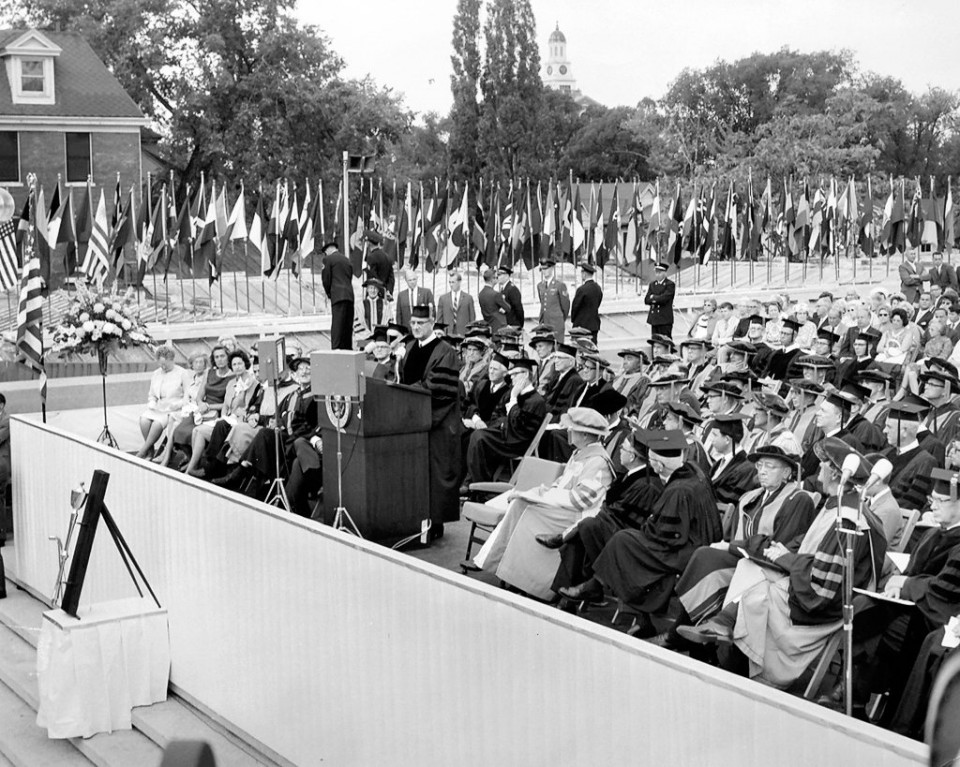
On August 5th. 1964, shortly after the Gulf of Tonkin incident involving an American ship, the Maddox, engaging with North Vietnamese ships, President Lyndon B. Johnson delivered the now famous Gulf of Tonkin Speech at Syracuse University. Johnson was originally scheduled to be the keynote speaker at the Newhouse School dedication, but took this opportunity to address the nation amid growing concern of communism in Southeast Asia. Despite what has been concluded about the incidents by historians since August 1964 (that the second of the two reports of the Maddox under fire didn’t actually happen), President Johnson used the Tonkin incident not only to raise the visibility of the Vietnam War in America, but to advance America’s response to communism through the use of force, a power given to him by the Tonkin Resolution.
A little more than a year later, close to 180,000 American troops had entered Vietnam with thousands more pouring in over the next five to six years. This incident, however inconclusive, proved to be the tipping point for major American involvement in Vietnam, which, by 1964, had been at war in some capacity since the mid-1940s.
According to an article by the Post-Standard’s Sean Kirst, thousands of people attempted to get a glimpse at the President, from “nuns by the ropes hoping to shake Johnson’s hand, and beaming “Johnson girls” from the university in matching outfits, and a delegation from CORE, a civil rights group, seeking to hand Johnson a petition calling for more federal help with stopping racial violence in Mississippi.
(Video courtesy of the Lyndon Baines Johnson Presidential Library and The Miller Center, a nonpartisan affiliate of the University of Virginia. Read the full transcript of Johnson’s speech.)
Below is home movie, shot by Syracuse resident Don Waful, of the dedication of Newhouse I, the first building in the Newhouse Communications Complex. The building was designed by I.M. Pei, who also designed the Everson Museum and is recognized as one of the world’s great architects.

